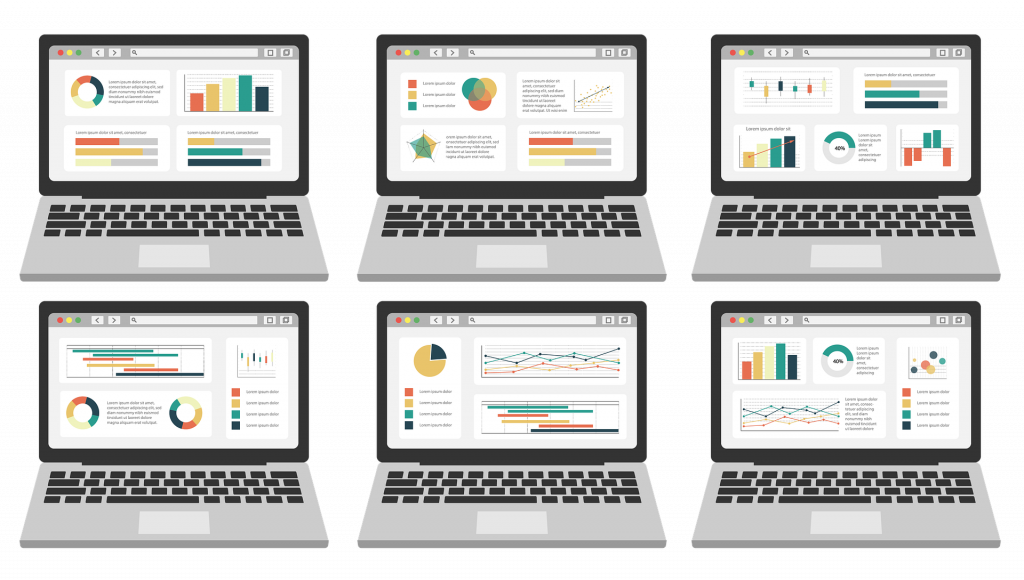
Published June 02, 2022, By Andrew Gissal

Your data can do more but time is limited and a complete overhaul is unnecessary and too risky – sound familiar? You’re not alone – and EOS can be your answer.
EOS stands for Entrepreneurial Operating System® – a set of resources and tools that provide leaders the means to get more out of their current business. Add in an effective EOS scorecard and teams can gain greater insight into their initiatives, but it takes an understanding of key scorecard components and how to build a scorecard that extracts the most value. When done right, EOS and EOS scorecards make it possible to look at your business from all directions, not just reactively.
What is an EOS Scorecard?
An EOS Scorecard is not your standard business scorecard. It does not simply tell you how you’re performing, what happened, or where metrics were positioned yesterday. It shows you the now, the in-the-moment, real-time snapshot of your business. This combined perspective serves an important purpose for any organization because it fuels the capability for leadership to have answers to more than just ‘What have we learned?’ – but also ‘What can we accomplish/fix today?,’ and more importantly, ‘Where can we be proactive and make changes?’
EOS Scorecard Components
When implemented, an EOS scorecard will look different from one business to the next in order to meet the unique needs of the business and its objectives. Every EOS scorecard, however, should have the underlying purpose to serve as your proactive guide across your top measurables and processes. With that being said, here are the top components present in every effective EOS Scorecard:

Before we break down the steps to building, here are some EOS scorecard examples to visualize as you follow along:
How to Build an EOS Scorecard
Building an effective EOS Scorecard does not have to be daunting, the information is already at your disposal. Through minor trial and error, these steps can take you from start to finish.
1. Complete a Vision/Traction Organizer (V/TO)™
If you have departments to report on, opportunities to improve your top revenue-producing areas, and objectives to hit, then you have a vision. Sometimes however, this vision gets disorganized and lost in the background of our daily work when immediate-attention grabbing challenges take the forefront.
Taking a few moments to complete a Vision/Traction Organizer (V/TO)™ will be that grounding element your EOS scorecard needs to remind your leaders how to better manage between matters that will remain pressing, without losing sight of key areas to remain aligned.
2. Decide on EOS Scorecard Categories
While it can be difficult to select exactly how to break down your EOS scorecard and which areas to highlight, it is imperative your leadership team is definitive in this step. Which numbers can you not go without knowing on a weekly basis? If the success of your business was limited to 5-15 categories, where do you lean on most?
These may shift as change management or new strategic developments take place, but be sure your key players are provided transparency in the decision of these categories so everyone is held accountable to the role they play in upholding them.
3. Set Weekly Goals for Each Category
One of your categories is “client retention,” what percentage of clients do you need to retain each week to maintain your revenue as you want it, what percentage do you need to then further exceed your revenue by X amount through client acquisition?
Goals should be set out in that format – as questions that beg an answer that is specific, measurable, and realistic. The idea of realistic can fluctuate as you experience team growth or face budget cuts/surpluses, for example, but as you adjust your goals should too.
4. Assign Goals to Team Members
At this point, you’ve figured out the WHY and the WHAT, now it’s time to ask WHO are the implementers for your EOS scorecard. Take each of your weekly goals and assign them specifically to one person, holding them accountable to that goal and the action items that encompass it. Think wisely about current workloads, skill-sets, and time management when selecting the individuals who will be responsible for the goals in front of them.
5. Create Measurables Tied to Your Core Processes
Processes that have become standard protocol often become untouched when they should be reevaluated from time to time. In this step, you’ll take a keen eye to those core processes and assess the best way to define what it is you’re measuring to track their progress and relation to your overarching categories. Scorecard metrics are quantitative in nature, but can also measure qualitative goals, and they should also consider more than just the ‘number to hit’, but also the scope, time period, and frequency in which to be measured.
6. Choose a Scorecard Keeper
Automation will be a huge benefit with your EOS scorecard, but the human element is still necessary in all this. A quick step, but to not be forgotten as you build out your scorecard – choose your scorecard keeper.
The keeper will be the go-to person for gathering your data and information going into that week, creating a scorecard that is relevant and accessible. From here, the data should be able to speak for itself, and influence a well-informed discussion for effective decision-making.
7. Discuss the Scorecard Each Week
This brings us right into the next step in building out your effective EOS scorecard – the weekly discussion. Having a timely and consistent discussion about your top categories and their measurables will limit the opportunity for shared knowledge or decisions to be lost in translation. Additionally, it will allow you to celebrate the wins and where you’re gaining traction, acknowledge the shortfalls, and dig deeper into the whys or correlations behind these shortcomings without feeling like you’re putting out multiple fires at once or behind in catching them in the first place.
8. Analyze the Scorecard
As you conduct weekly analysis of your goals and measurables, take time to analyze the mechanism that you’ve worked hard to create in order to get to this point – the EOS scorecard itself. Change is constant, so don’t allow your scorecard to become stagnant or overly redundant, it is built to be flexible. Including this step to help you monitor will make it easier to catch inconsistencies in your data where sources may be lacking accuracy or experiencing a disconnect in integration.
9. Test and Adjust
In your final step towards building an effective EOS scorecard, take what you learned from analyzing measurables weekly and your scorecard as a whole to test and adjust accordingly.
Be mindful to not shift every category or measurable at once. Control for variables that are working so you can accurately test and assess where a shift in your scorecard may be valuable or where real issues may exist in your sources. Changing your scorecard weekly will also withhold you from significant learnings. Changes will be more prevalent at the start until the data gains traction and your assessment becomes more stable.

EOS Scorecard Final Thoughts
Behind every successful organization are the leaders that work to get the most out of the business, and with EOS, teams can elevate their output by having a better understanding of the tools they have at their side. Implementing EOS scorecards will give your data the push it needs to help you see what is currently happening and how you can prepare for the future.
When you follow these steps we have outlined above, building and using an effective EOS scorecard will promote greater accountability, increased data visibility, and a renewed sense of understanding and control over every moving part of your business.

Andrew Gissal